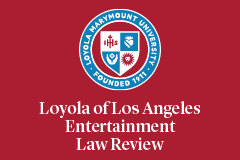Abstract
This article discusses a recent controversial copyright case involving inspiration. Marvin Gaye’s family, who owns the copyright to “Got to Give It Up,” claimed that “Blurred Lines,” made famous by Robin Thicke, infringes on the family’s copyright. The Gaye family prevailed at trial. At summary judgment, the Federal District Court permitted the case to go to trial without determining whether there were elements to “Got to Give It Up” that were unprotected as unoriginal, commonplace musical ideas, or musical building blocks. Had the court made such a determination, it is doubtful the case would have gone to trial. The summary judgment phase of litigation is supposed to weed out obviously unmeritorious cases such as this one. On appeal, the majority declined to address the merits of the case, but the dissenting judge examined “Got to Give It Up” and “Blurred Lines,” and concluded, consistent with this article, that no infringement occurred as a matter of law because “Got to Give It Up” contained no protected elements that were substantially similar.
This article also analyzes the two songs in detail from a music theory perspective and concludes that the similarities between the two songs were unprotected and that the protected elements were not similar. Accordingly, the District Court should have granted summary judgment holding that there was no infringement. Further, the Gaye family should not have succeeded at trial. In our view, the litigation process failed, and we make some recommendations on how to improve the court’s review at summary judgment for music copyright cases.
Recommended Citation
Allen Madison and Paul Lombardi Ph.D,
Blurred Justice,
39 Loy. L.A. Ent. L. Rev. 145
(2019).
Available at: https://digitalcommons.lmu.edu/elr/vol39/iss2/3


